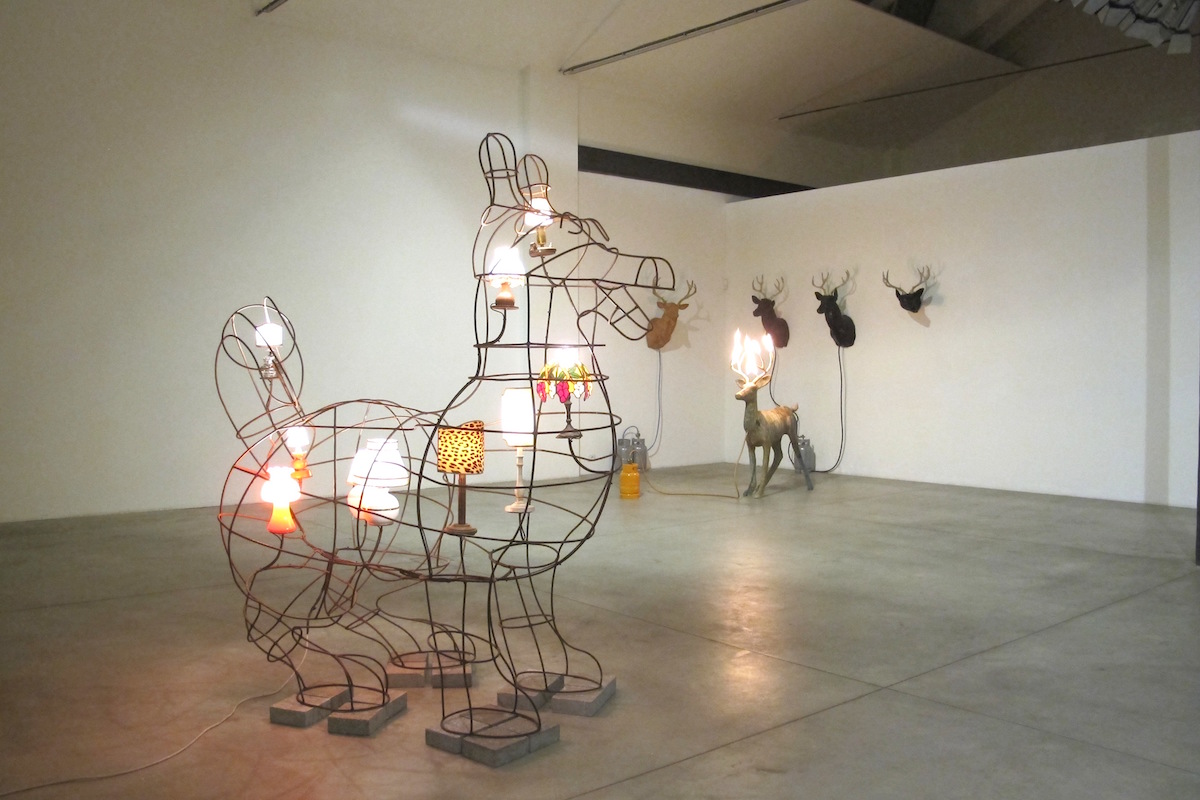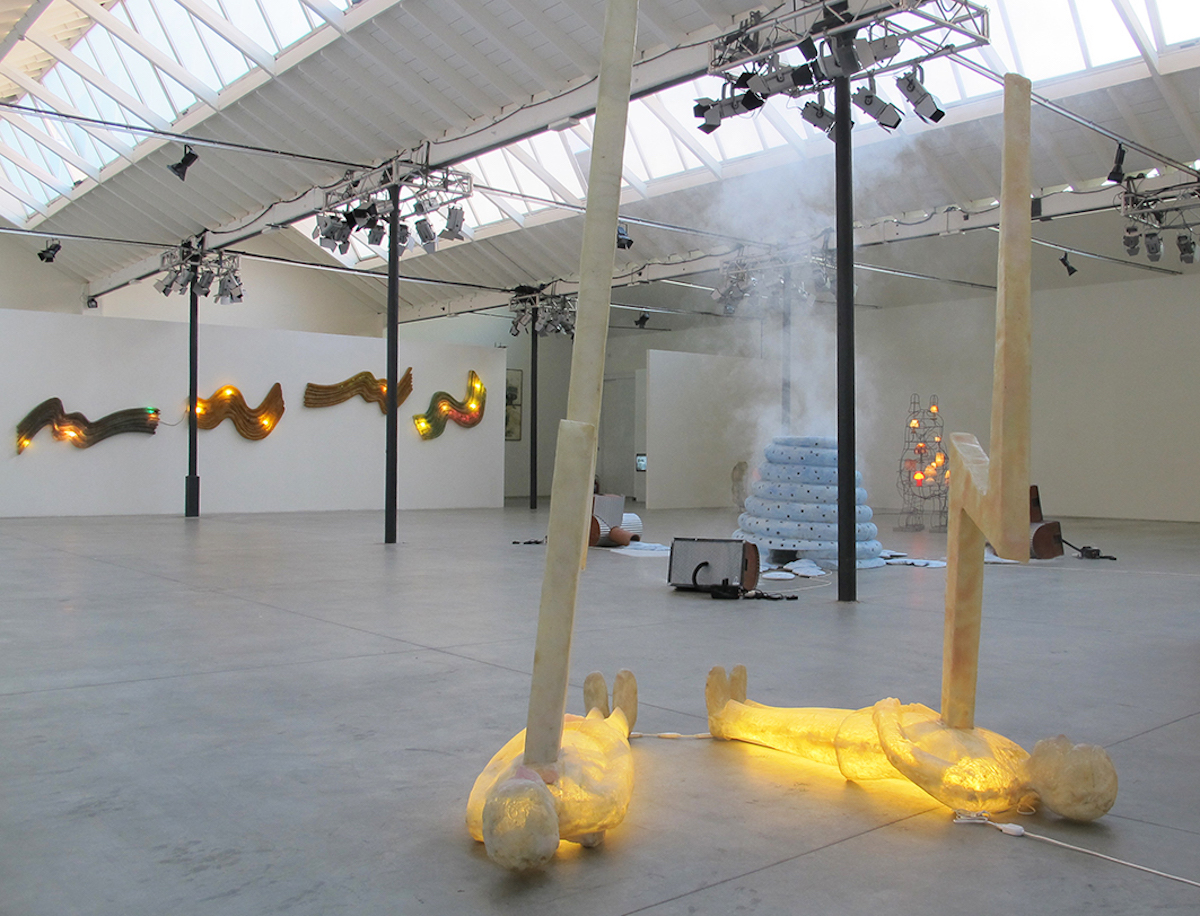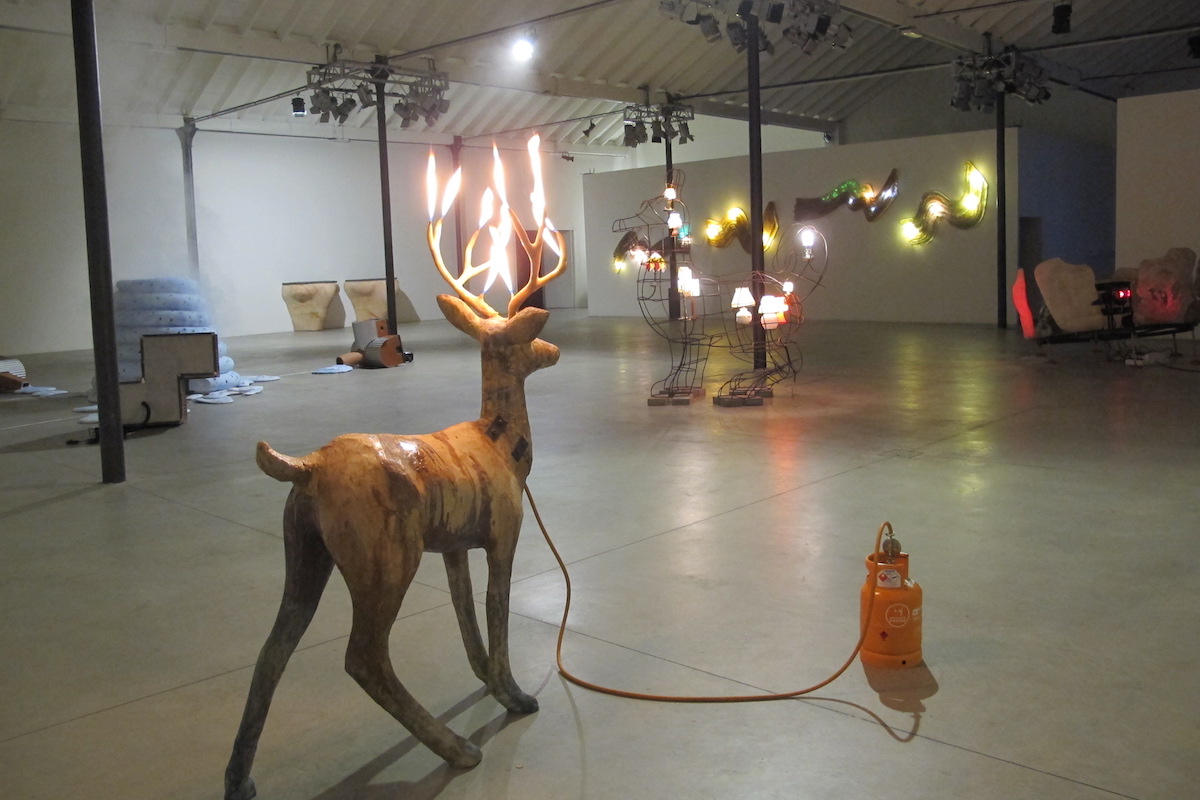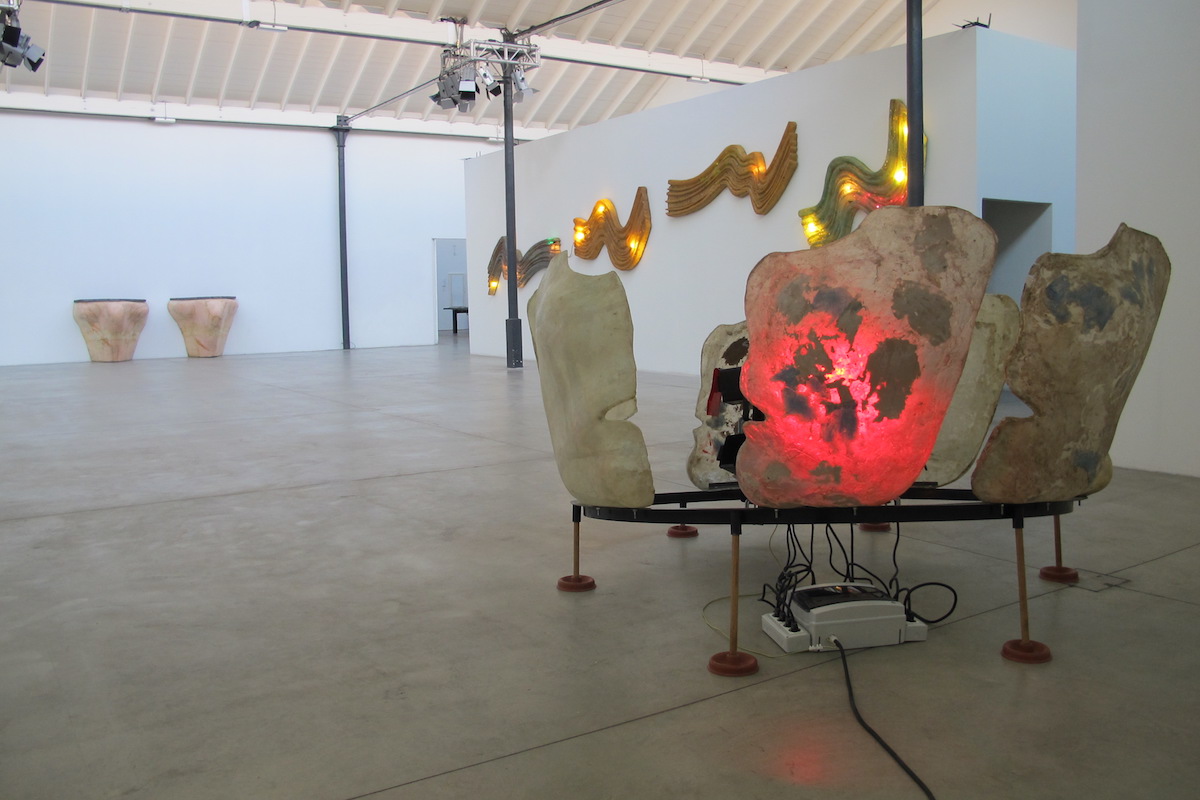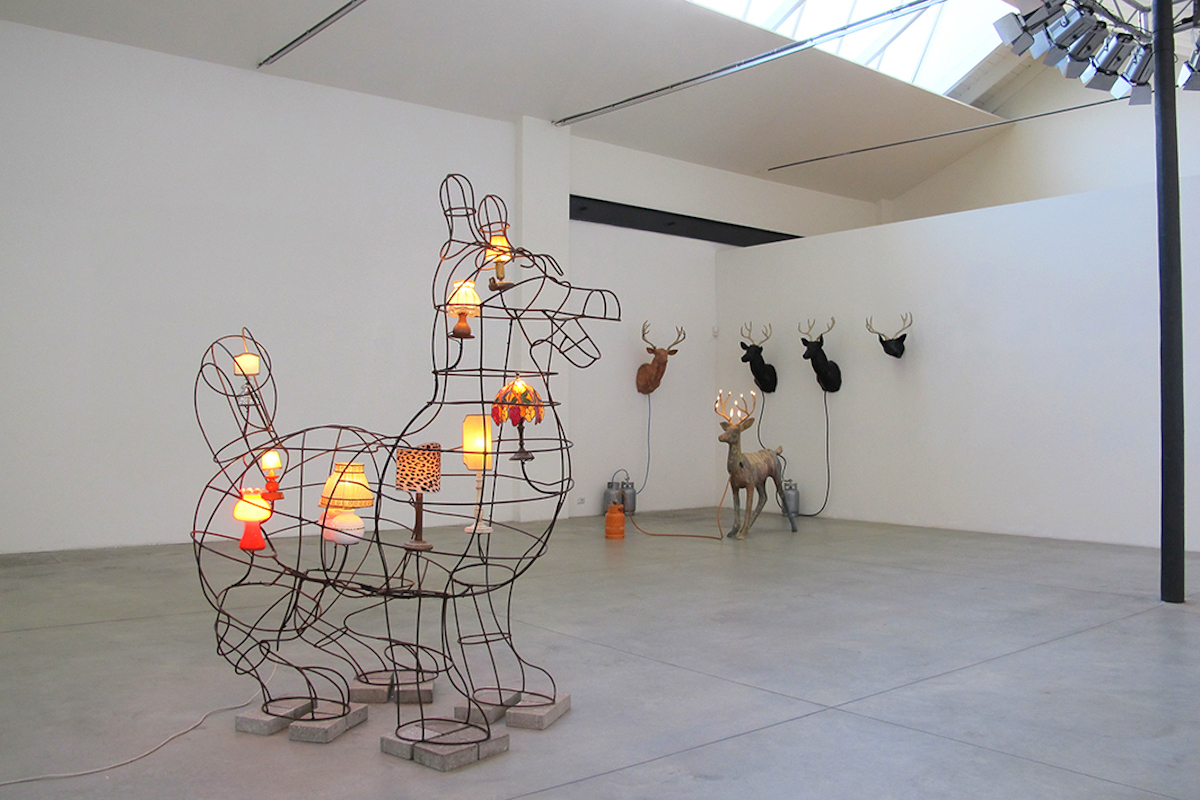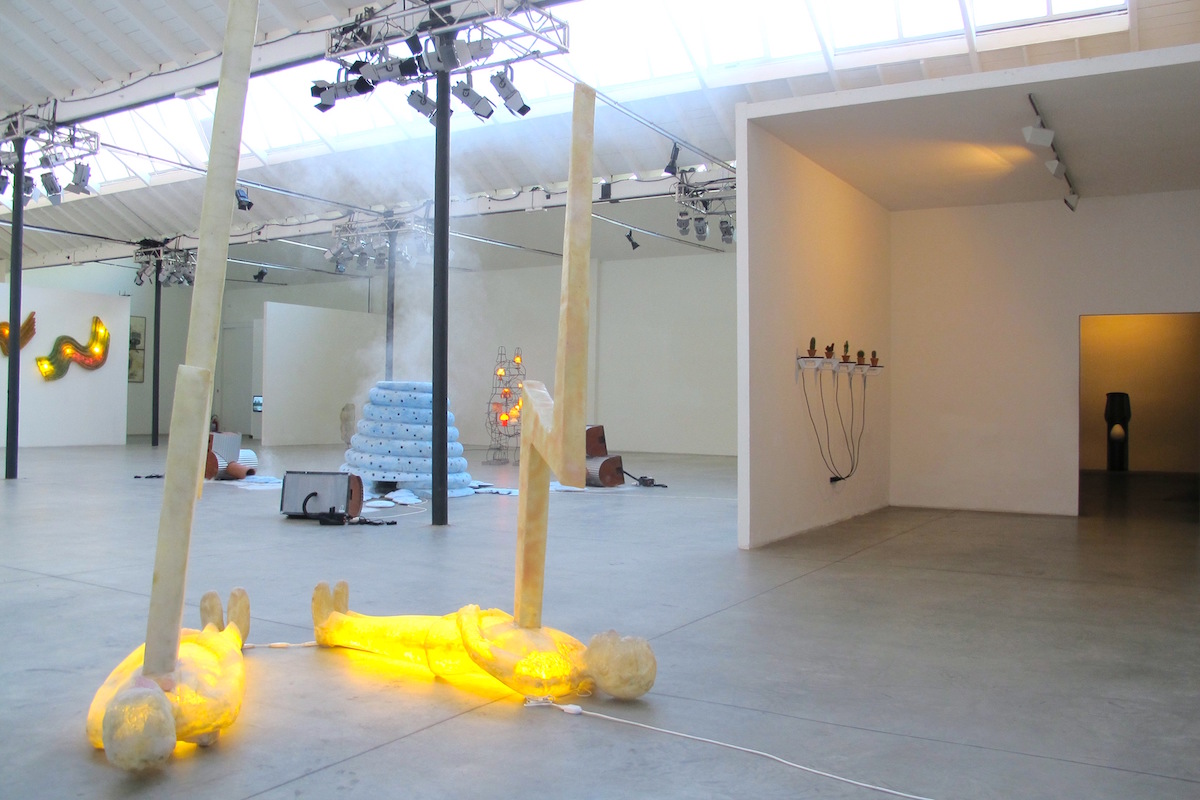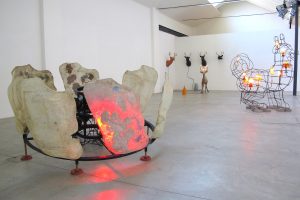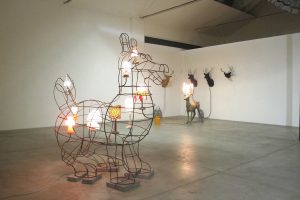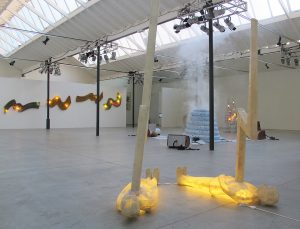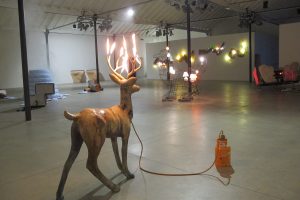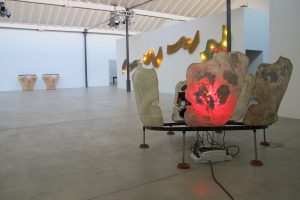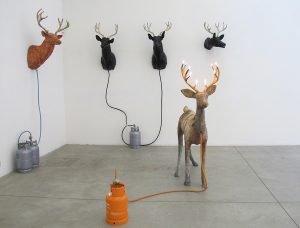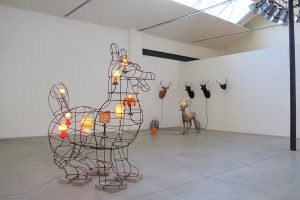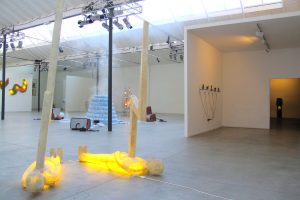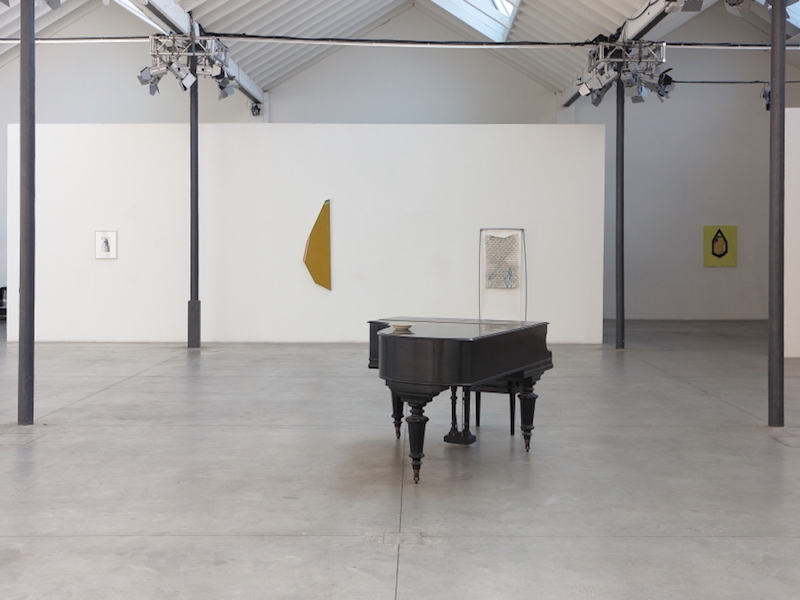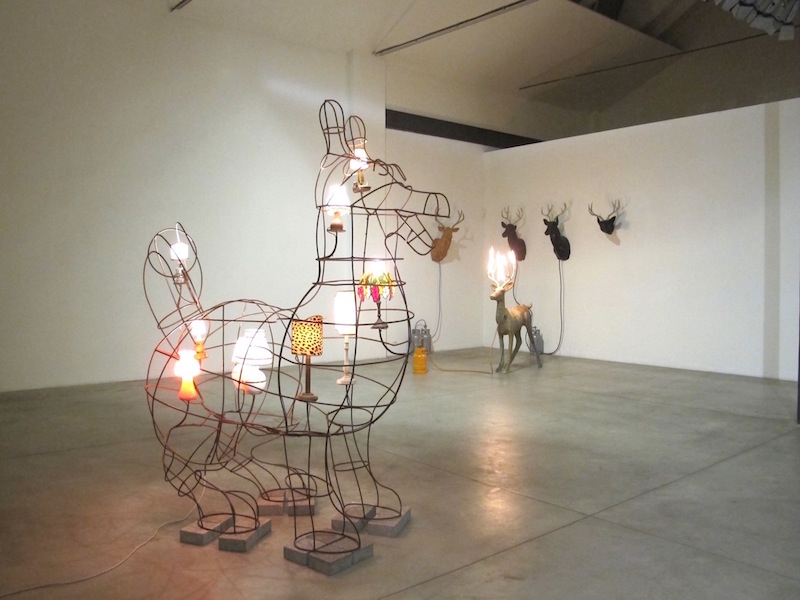
DENNIS OPPENHEIM
SCULTURE 1979-2006
4 October to 23 November 2013
DENNIS OPPENHEIM
SCULTURE 1979-2006
4 October to 23 November 2013
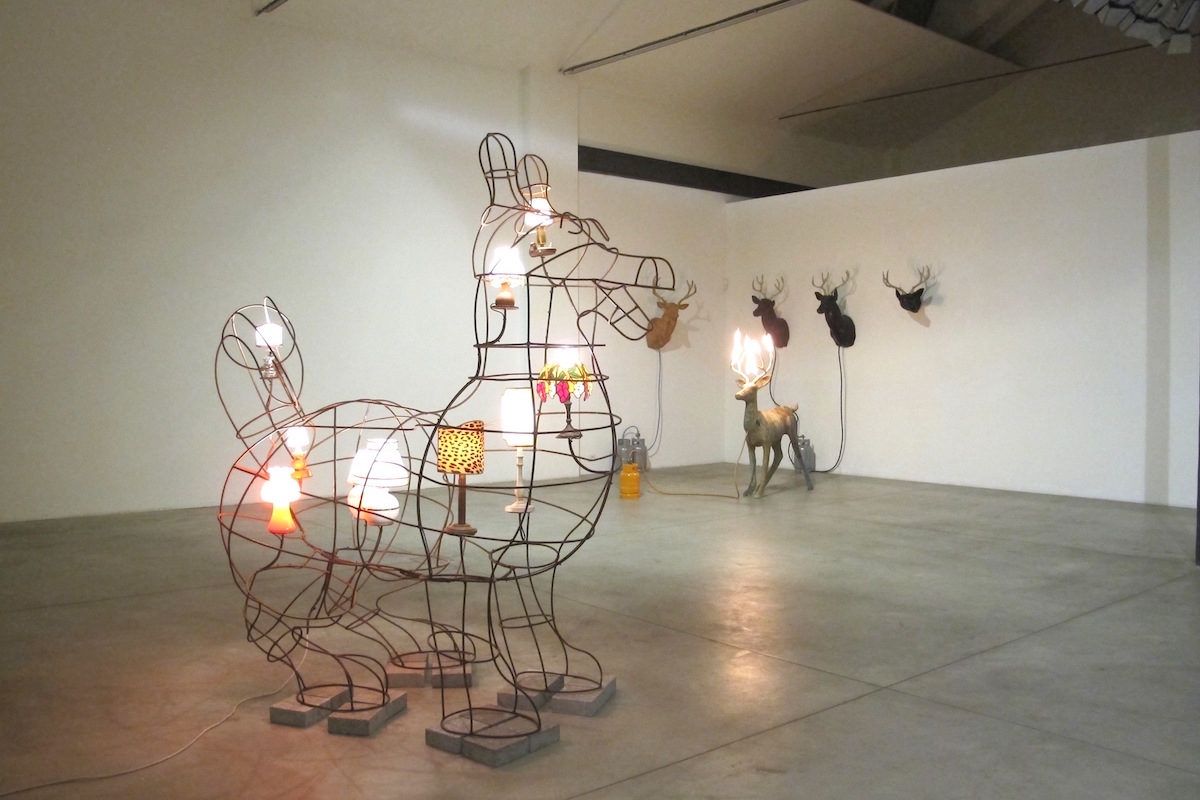
Text
Galleria Fumagalli, in collaboration with Spazioborgogno, inaugurates, in the space of Museo Pecci in Milan, the exhibition of American artist Dennis Oppenheim, exclusively dedicated to his plastic production. The exhibition, curated by Alberto Fiz and Amy Oppenheim, the artist’s wife, features a wide selection of sculptures including work of the last thirty years ranging from Tear Drop Room (1979), a metaphorical room with an enormous teardrop, to Volcano (2006) where a volcano, with rivers that seem to rise from the floor, modifies the space of the gallery. One of the most important artists of the postwar generation, Oppenheim has been the protagonist of some essential experiences such as Land Art, Body Art, Environment Art and Public Art. The regenerative theory and the continuous metamorphosis inside a precarious and unstable universe are at the core of all the researches of the American artist. Oppenheim’s works destabilize the viewer and continuously challenge the limits developping a new perception of the physical and psychologic space. He gives life to an unpredictable crossbreeding that also anticipate the new frontiers of science and medicine and the substitution of the organs with prosthesis. Oppenheim develops a molecular universe in a dialogue between artificial and natural forms.
Everything looks genetically modified: “His artistic experience” said Alberto Fiz, “is not characterized only by the simple presence of an object, but by its transformation. An entropic process that amplifies the sphere of knowledge developing a renovate perception of the spacial-temporal context. The existence of things suffers a radical changing in a mechanism of alteration and deviance. What seems stable is now questioned developing a precariousness on the basis of a principle that goes to a progressive implication of the being and of the environment”. His work represents a continuos provocation of the rules that destabilizes the certainty of every experience. With irony, the American artist creates a sort of domestic Land Art where houses natural phenomenons, such as a volcano or the Acting Strokes. In the same way what has a domestic destination, such as flatirons, becomes activator of energy for cactus (Iron cactus, 1994), such as the ancient spindles of sewing machines seem spinning dancers (Four spinning dancers, 1989). In other cases the objects become anthropomorphic and in Two objects (1898) the chair and the armchair try to reproduce themselves in a parodistic sexual love, while with Blushing Machine (1996) there is a machine that blushes, as if it had an emotive reaction.
Oppenheim works on deviance and dissonance creating a linguistic and independent system for every work. In this direction it is possible to find a criticism to the functionalism and the exasperated technical rigidity, and for this reason an hybrid object like Lamp Dog (1996) is significant, which makes fun of the design. The house, after all, is constantly present in the research of Oppehneim with which he shares the collective neurosis. The American artist breaks the schemes of a comforting esthetics and his works has often a double meaning. Together with a lucid and metamorphic aspect, there is a component of apprehension and dangers. This is evident in the famous work Deer (1990) that shows a deer made of glass fiber and fire from horns activated by gas cylinders. A prolonged activation of the flame would lead to the absorption of energy and saturation of the environment: “There is often a dark side in what I make, that I have to maneuver with attention”, Oppenheim warns revealing in his work the presence of “shadows” that force the viewer to question the absolute instability of the surroundings. On the occasion of his first solo exhibition organized in 1968 at John Gibson Gallery (New York), the press release of that event reported: “Dennis Oppenheim’s sculpture is alive and on the rise”. This quote seems even more valid today, when is evident the elusive appearance of a plastic art that never ends in itself but reveals the paradoxical and ambiguous aspect of things that belong to us and participate in our life adventure.
Text
Galleria Fumagalli, in collaboration with Spazioborgogno, inaugurates, in the space of Museo Pecci in Milan, the exhibition of American artist Dennis Oppenheim, exclusively dedicated to his plastic production. The exhibition, curated by Alberto Fiz and Amy Oppenheim, the artist’s wife, features a wide selection of sculptures including work of the last thirty years ranging from Tear Drop Room (1979), a metaphorical room with an enormous teardrop, to Volcano (2006) where a volcano, with rivers that seem to rise from the floor, modifies the space of the gallery. One of the most important artists of the postwar generation, Oppenheim has been the protagonist of some essential experiences such as Land Art, Body Art, Environment Art and Public Art. The regenerative theory and the continuous metamorphosis inside a precarious and unstable universe are at the core of all the researches of the American artist. Oppenheim’s works destabilize the viewer and continuously challenge the limits developping a new perception of the physical and psychologic space. He gives life to an unpredictable crossbreeding that also anticipate the new frontiers of science and medicine and the substitution of the organs with prosthesis. Oppenheim develops a molecular universe in a dialogue between artificial and natural forms.
Everything looks genetically modified: “His artistic experience” said Alberto Fiz, “is not characterized only by the simple presence of an object, but by its transformation. An entropic process that amplifies the sphere of knowledge developing a renovate perception of the spacial-temporal context. The existence of things suffers a radical changing in a mechanism of alteration and deviance. What seems stable is now questioned developing a precariousness on the basis of a principle that goes to a progressive implication of the being and of the environment”. His work represents a continuos provocation of the rules that destabilizes the certainty of every experience. With irony, the American artist creates a sort of domestic Land Art where houses natural phenomenons, such as a volcano or the Acting Strokes. In the same way what has a domestic destination, such as flatirons, becomes activator of energy for cactus (Iron cactus, 1994), such as the ancient spindles of sewing machines seem spinning dancers (Four spinning dancers, 1989). In other cases the objects become anthropomorphic and in Two objects (1898) the chair and the armchair try to reproduce themselves in a parodistic sexual love, while with Blushing Machine (1996) there is a machine that blushes, as if it had an emotive reaction.
Oppenheim works on deviance and dissonance creating a linguistic and independent system for every work. In this direction it is possible to find a criticism to the functionalism and the exasperated technical rigidity, and for this reason an hybrid object like Lamp Dog (1996) is significant, which makes fun of the design. The house, after all, is constantly present in the research of Oppehneim with which he shares the collective neurosis. The American artist breaks the schemes of a comforting esthetics and his works has often a double meaning. Together with a lucid and metamorphic aspect, there is a component of apprehension and dangers. This is evident in the famous work Deer (1990) that shows a deer made of glass fiber and fire from horns activated by gas cylinders. A prolonged activation of the flame would lead to the absorption of energy and saturation of the environment: “There is often a dark side in what I make, that I have to maneuver with attention”, Oppenheim warns revealing in his work the presence of “shadows” that force the viewer to question the absolute instability of the surroundings. On the occasion of his first solo exhibition organized in 1968 at John Gibson Gallery (New York), the press release of that event reported: “Dennis Oppenheim’s sculpture is alive and on the rise”. This quote seems even more valid today, when is evident the elusive appearance of a plastic art that never ends in itself but reveals the paradoxical and ambiguous aspect of things that belong to us and participate in our life adventure.
Installation views
Installation views


